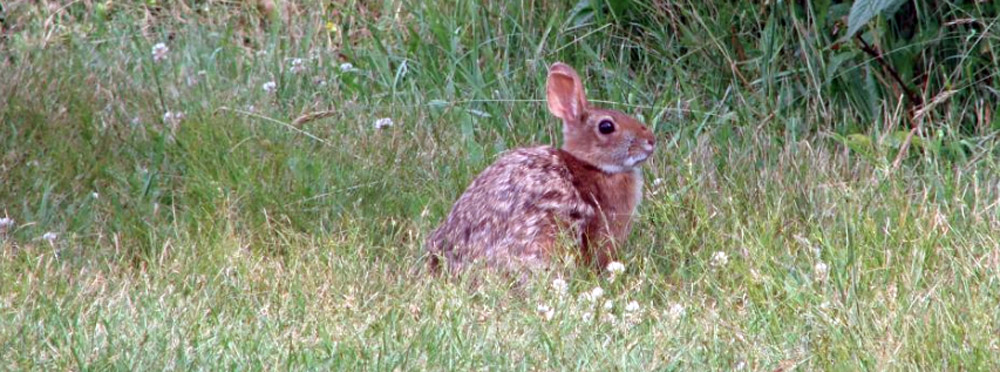From UNH News Service: Scientists with the New Hampshire Agricultural Experiment Station at the University of New Hampshire have developed a method to estimate the abundance of New England cottontail populations. The noninvasive method provides an important tool in the effort to conserve this region’s only native rabbit, a state-endangered species in Maine and New Hampshire.
“To conserve a species, it is essential to know its population status and be able to monitor it to detect trends over time, especially trends that reveal how the species is responding to management actions,” said Adrienne Kovach, assistant professor of natural resources and the environment. “Our work provides the methodology to measure abundance and therefore an approach for monitoring trends and response to management in the future.” Kovach collaborated with Thea Kristensen, who worked on the project as an experiment station supported postdoctoral researcher and now teaches at Amherst College.
According to Kovach and experiment station researchers who have been studying the New England cottontail, there has been an 86 percent decline in the distribution of the New England cottontail over the last several decades. In addition, the New England cottontail has lost more than 80 percent of its habitat over the last 50 years as people have developed the landscape and areas of shrubs and young trees have grown up to become mature woods that don’t offer enough ground-level vegetation for cottontails to find food and hide from predators, according to the New England Cottontail Conservation Initiative, of which UNH is a part.
“Not only does this have implications for the New England cottontail, it has implications for other species that depend on these young forest and shrub land habitats,” said Kovach. “Many are on the decline, including shrub land birds and pollinators.”
Kovach and Kristensen developed a method to estimate the abundance of New England cottontails on habitat patches using the DNA obtained from fecal pellets collected during winter surveys to identify unique individual rabbits. They then constructed histories of the “captures” of these individuals and used that in a mark-recapture framework to estimate the abundance of cottontails.
“New England cottontails are a rare and secretive species,” said Kovach. “They are exceedingly difficult to monitor. Observations or trapping are not practical, and noninvasive genetic methods tied to fecal pellet sampling is the most effective way to monitor them. We determined the level of survey effort needed by field biologists to collect sufficient data for precise and accurate population estimates.”
Going forward, this new estimation method will be integrated into ongoing conservation and monitoring activities for the New England cottontail. Specifically, this method can be used to assess cottontail population status and measure the response to habitat management and restoration.
“This is an area of uncertainty in New England cottontail conservation. Despite a tremendous habitat restoration effort, we do not know how effective this management is for helping the species. This method now provides a way to directly measure and quantify the effectiveness of management on the cottontail populations. We are currently implementing this method on 30 managed sites across the species range to estimate population sizes and measure the response to management,” Kovach said.
This research is presented in the journal Ecosphere. It is based upon work supported by the NH Agricultural Experiment Station, through joint funding of the National Institute of Food and Agriculture, U.S. Department of Agriculture, under award number 225575, and the state of New Hampshire. Funding also was provided by the U.S. Fish and Wildlife Service (Region 5, Division of Natural Resources, National Wildlife Refuge System), the Maine Department of Inland Fisheries & Wildlife, and the Connecticut Department of Energy & Environmental Protection.


 Return to the Concord Monitor
Return to the Concord Monitor